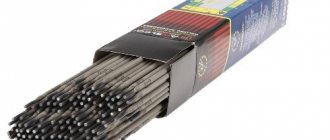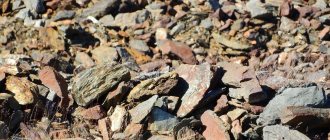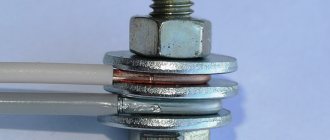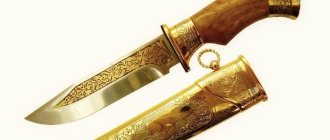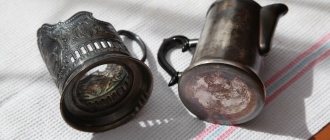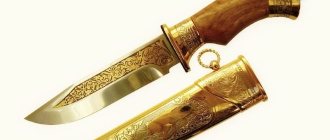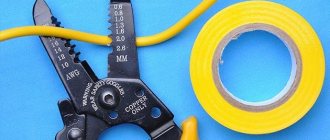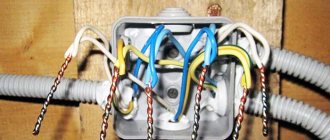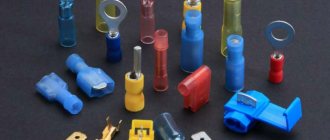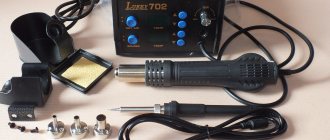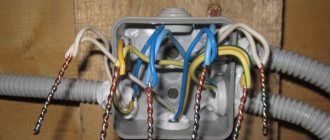When heat treating copper and its alloys, two features of the material are taken into account: increased thermal conductivity and interaction with gases when heated. It is these factors that cause rapid and uniform heating of the metal along the perimeter of the section. Annealing copper is heating the metal followed by cooling, allowing you to change the properties of the material. Heat treatment makes the metal softer and more ductile. Copper is used in various fields where ductility is important.
Annealing of copper
Why roast copper and how to do it
At collection points, non-ferrous metal is highly valued, especially copper, which has a higher price than other non-ferrous metals. Large volumes of copper can only be collected by collecting copper wires and wires, which are often sheathed. In this regard, many enterprising citizens have a question: how to burn copper at home. According to Russian legislation, it is possible to light fires for burning wires in order to remove the plastic sheathing only in specially designated areas. It is important to understand right away how to burn copper correctly, since this category of offenses entails a large fine.
Recycling collection points
Scrap acceptors purchase the following waste cable and wire products:
a) manufacturing defects, warehouse surplus;
b) used cable lines, production remains;
c) old uncleaned cable;
d) dismantled communications;
e) installation waste.
Acceptance is carried out according to several criteria, which determine the price per kg of scrap. The length of the conductor pieces, the percentage of scrap to insulation, and foreign impurities are taken into account.
It is recommended to hand over recyclable materials to collection points that have documents and permits to conduct this type of activity. Before weighing, the scrap is inspected and assessed by specialists.
By the way! To determine the weight of the metal without winding, the acceptance specialist cuts off a prototype conductor, strips it and weighs it.
One of the main sources of non-ferrous metal scrap is cable scrap. Copper cable is a cable with conductive cores made of electrical copper .
Heat treatment of metals. Annealing
Annealing of copper
Copper is also subjected to heat treatment . In this case, copper can be made either softer or harder. However, unlike steel, copper is hardened by slow cooling in air, and copper becomes soft by rapid cooling in water. If a copper wire or tube is heated red hot (600° C) over a fire and then quickly immersed in water, the copper will become very soft. After giving the desired shape, the product can again be heated over a fire to 400 ° C and allowed to cool in air. The wire or tube will then become solid. If it is necessary to bend the tube, it is tightly filled with sand to avoid flattening and cracking.
Annealing brass increases its ductility. After annealing, brass becomes soft, easily bends, knocks out and stretches well. For annealing, it is heated to 600 ° C and allowed to cool in air at room temperature.
Annealing and hardening of duralumin
What if you add a copper additive to your oil?
You can find these additives in a jar on sale. No approvals, no standards, no certificates. Everything is based on trust. At one's own risk. In my opinion, it is better not to experiment.
You can find these additives in a jar on sale. No approvals, no standards, no certificates. Everything is based on trust. At one's own risk. In my opinion, it is better not to experiment.
Any additive manufacturer always presents its products in the most favorable light. Typically, the emphasis is on improving several of the above characteristics of the oil, while the rest are supposedly “not worsened.” However, manufacturers of miracle potions based on copper often promise fuel savings of as much as 12%, an increase in power by the same amount, a reduction in noise by 18 dB (and that’s a lot!) and, most importantly, an increase in service life by 30 times! From these statements alone one can understand that either the Nobel Prize cannot find a laureate in any way, or it is all a fake.
Soldering copper pipes
Copper has been used by mankind since ancient times, although its use for laying heating and water supply pipes on a large scale is officially considered to be the beginning of the last century.
One of the main processes for joining copper pipes is soldering, which involves heating the pipe ends and couplings, causing the solder to melt and form a sealed joint.
In this article we will look at how to solder copper pipes, their types, advantages and disadvantages.
Types of pipe materials
The industry produces two types of pipe products: annealed and unannealed copper pipe, what are the differences? The manufacturing process for both varieties involves processing copper ore. All unwanted impurities are removed from the resulting blister copper by blowing oxygen through it. The result is metal ingots of high purity. Further, the production technology of each type is sharply different.
What equipment is used
Copper undergoes two types of heat treatment:
- annealing to reduce remaining stress;
- recrystallization annealing.
The temperature regime for recrystallization of oxygen-free copper is 200–240°C, and that of electrolytic copper is 180–230°C. Metal containing oxygen is treated in a neutral environment to reduce losses after oxidation.
For annealing heat treatment, a shaft-type convection oven is used. In addition, the equipment is in demand for annealing wire, rope, rods, steels, and metal balls.
The oven has the following advantages:
- improved accuracy of temperature control;
- automation of heat treatment;
- the fan at the bottom of the device ensures stable heat transfer;
- processing error is +/-5C;
- heating is carried out from electricity;
- ammonia and pure nitrogen protect the metal from oxidation;
- capacity - 8–36 tons;
- ease of operation and installation.
The furnace lid is equipped with a special pneumatic device, which is responsible for opening and closing during the annealing process. The emergency valve operates automatically when the pressure rises to high or drops to low.
Annealing furnace
Why is metal annealing necessary?
The exact nature of the annealing process to which the metal is subjected depends largely on the purpose of the annealed metal. There is a significant difference in the method of annealing between annealing in factories where huge quantities of sheet steel are produced, and annealing in a small auto repair shop, where only one part requires such processing.
In short, cold working is plastic deformation by destruction or distortion of the grain structure of the metal. During annealing, a metal or alloy is heated to a temperature at which recrystallization occurs - the formation of new grains - not deformed and round - instead of old - deformed and elongated - grains. Then the metal is cooled at a given speed. In other words, crystals or grains within the metal that have been displaced or deformed during cold plastic working are given the opportunity to realign and recover to their natural state, but at an elevated annealing temperature.
Cold working: copper, lead and aluminum
Ordinary metals vary greatly in their degree and rate of strain hardening - cold hardening or cold hardening. Copper is hardened quite quickly as a result of cold forging, and, therefore, quickly reduces its malleability and ductility. Therefore, copper requires frequent annealing so that it can be processed further without the risk of destruction.
On the other hand, lead can be hammered into almost any shape without annealing or risk of breaking it. Lead has such a reserve of ductility that allows it to obtain large plastic deformations with a very low degree of strain hardening. However, although copper is harder than lead, it is generally more malleable.
Processing principle
Annealing is a heat treatment procedure for copper that produces a stable, strong metal structure, free from residual stresses. Annealing technology goes through several stages:
- Loading metal into equipment.
- Installing the muffle and purging with protective gas to remove air.
- Heating to 650–700 degrees.
- Rapid cooling up to 100 degrees when immersing the product in water.
- Giving the required shape.
- Reheat to 350–400 degrees.
- Air cooling and unloading.
The last stage of the technology is carried out twice as slow.
The treatment ends when the annealing temperature of copper reaches a value at which it can be exposed to air without oxidation. It is prohibited to expose workpieces to high-temperature air. Duration: 1–2 hours.
How to anneal copper at home
When heat treating copper and its alloys, two features of the material are taken into account: increased thermal conductivity and interaction with gases when heated.
It is these factors that cause rapid and uniform heating of the metal along the perimeter of the section. Annealing copper is heating the metal followed by cooling, allowing you to change the properties of the material. Heat treatment makes the metal softer and more ductile. Copper is used in various fields where ductility is important. Annealing of copper
Introduction: Punishment for lighting a fire and burning garbage
Russian legislation provides for several federal laws, articles of the Criminal Code and the Code of Administrative Offenses, as well as government regulations that prohibit the lighting of fires, burning of garbage and burning of wire. For different categories of offenses, different punishments are expected, from monetary fines to real terms. In order not to fall under the articles of the law, it is important to familiarize yourself in advance with the list of legislative acts that control the burning of waste, and in particular the burning of copper and aluminum. The main prohibiting and controlling articles are the following:
- Code of Administrative Offenses – Article 8.2.3;
- Article 51 of Federal Law No. 7 on environmental protection;
- Code of Administrative Offenses – Article 20.4;
What punishment these articles provide for and what they prohibit should be examined in detail so that there are no difficulties with the law when trying to dispose, process or transport scrap metal.
Article 8.2.3 of the Code of Administrative Offenses of the Russian Federation – Failure to comply with rules and requirements for waste management, improper processing of industrial waste, including illegal disposal, accumulation and transportation. The article provides for punishment in the form of a fine of 1,000 to 2,000 rubles (for legal entities up to 250 thousand, for officials up to 30 thousand rubles). According to Article 8.2.3 of the Code of Administrative Offenses, those actions with garbage that have resulted in epidemics, infections, or harm to the environment and the health of citizens are unlawful. This article does not include offenses that are criminal offenses.
Adopted in 2002, the 7th Federal Law “On Environmental Protection”, article 51 of which specifies the requirements for citizens who process and dispose of waste and garbage, has been revised several times. For 2022, the following prohibitions are relevant:
- It is prohibited to throw garbage and waste from a fire (for example, burnt plastic after burning copper), into water, bury it in the ground, or near urban and rural settlements.
- It is prohibited to place and store garbage (including metal waste) near urban and rural settlements, as well as near recreational areas, on animal migration routes, and fish spawning areas;
- It is prohibited to create a danger to humans and the environment by burning and disposing of waste.
The Code of Administrative Offenses of the Russian Federation also contains Article 20.4, which regulates the organization of fires, including for the purpose of roasting copper. According to this article, violation of fire safety requirements is punishable by a fine of 4 to 5 thousand, or arrest for up to 90 days. A place for making a fire must be equipped by insulating the fire pit. You should not light a fire in windy weather, and it is also important to properly dispose of waste - by burning or roasting it in barrels. The Criminal Code of the Russian Federation provides for punishment only for those actions that entailed the death of a person or caused serious harm to the health of citizens (Article 219).
Admission conditions and restrictions
Scrap copper cable is a valuable type of secondary raw material and is accepted in almost any form. The cost at which you can hand over copper wire to a collection point depends on a number of factors:
- Quality of raw materials . The higher the copper content in the cable, the higher its cost.
- Core section thickness.
- Purity . The cable should be free of visible traces of grease, enamel, varnish, welding and oxides.
- The integrity of the shell and the complexity of further processing of scrap.
- Batch size . The larger the batch, the higher the price per 1 kg of cable.
It is not recommended to hand over scrap metal to small private collection points . As a rule, they do not have documents confirming the right to conduct such activities and are simple resellers who announce the minimum price for metal.
A higher price for scrap metal is offered by processing plants and metal depots that have all the necessary technological and material capabilities for its transportation, evaluation and further processing.
Recycling collection points
Scrap acceptors purchase the following waste cable and wire products:
a) manufacturing defects, warehouse surplus;
b) used cable lines, production remains;
c) old uncleaned cable;
d) dismantled communications;
e) installation waste.
Acceptance is carried out according to several criteria, which determine the price per kg of scrap. The length of the conductor pieces, the percentage of scrap to insulation, and foreign impurities are taken into account.
It is recommended to hand over recyclable materials to collection points that have documents and permits to conduct this type of activity. Before weighing, the scrap is inspected and assessed by specialists.
Methods for cleaning cables for scrapping
Used colored cable scrap is a popular and expensive recyclable material. You can extract it yourself from old power, fiber optic, telephone, installation, and other wiring. What tools and equipment will be needed to remove the winding? How to quickly clean a cable for scrapping, spending a minimum of time and effort?
Used colored cable scrap is a popular and expensive recyclable material. You can extract it yourself from old power, fiber optic, telephone, installation, and other wiring. What tools and equipment will be needed to remove the winding? How to quickly clean a cable for scrapping, spending a minimum of time and effort?
Popular methods for stripping insulation
When handing over a cable, the metal core of the conductors is of value. Before going to the receiving point, you need to strip the cable from the insulating winding. There are several ways to do this yourself:
- manual stripping with a knife or hammer is a labor-intensive and time-consuming process, suitable if the batch of scrap is small;
- roasting and melting - a fast process, but harmful to the environment, not recommended for thin-stranded scrap, the metal burns out along with the winding;
- the use of special equipment is the fastest and safest method; tools are used during the work.
Cleaning with a knife or hammer
A construction or stationery knife or pullers with hooks, adjusting screws, etc. are suitable for stripping wires. When working, carefully cut the winding along the core, then take it to the side and cut it.
When working with a hammer, they hit the cable with force until the insulation separates from the metal.
Firing and reflow
You can burn raw materials over a fire, but the method is justified for large volumes of raw materials. Perform work outdoors, observing safety precautions.
Melting a cable with a soldering iron is one of the ways to remove insulation from thin and thick wires and cables. Before work, the wire is laid on a flat horizontal surface. Then heat up the soldering iron and apply it vertically to the winding. As the insulation melts, the cable is rotated around its axis. After firing, the plastic can be easily removed with pliers, tweezers, or pliers.
Important! Work in a well-ventilated area. When the insulation melts, toxins are released and there is a strong plastic smell.
Using a side cutter and stipper
How to quickly clean the cable for scrap delivery and mechanize the process? Special tools will help:
Side cutters are called wire cutters or tweezers for cutting wires. When using it, the free end of the wire is clamped between the blades, then carefully turned and pulled. The insulation is easily removed.
Note! The cutting edges are directed in the direction of movement of the tool so that the blades cut into the winding without much effort. If you handle the side cutter incorrectly, the cable will break off along with the insulation.
A stripper will help automate the cable cleaning process. There are different subtypes of the instrument. Models differ in the number of additional functions.
Stipper and working with it
The operating principle of all strippers is the same:
- the end of the cable is inserted into the hole of the tool;
- they clamp the handles of the stripper with their hands to cut through the windings;
- then the conductor is pulled outward, freeing it from insulation.
Important! The good thing about this tool is that it is simple and easy to use and is inexpensive. It rarely damages the cable, reduces winding removal time, and is suitable for working with single-core stranded conductors.
Special equipment
If there is a lot of scrap, special equipment for removing insulation will help simplify the preparation of raw materials. It can be rented directly from a centralized collection point.
Required temperature for melting copper
Copper is not a fusible metal
People found the use of copper back in ancient times, when it was mined in the form of nuggets. Due to the low temperature required for the melting process, it began to be widely used for the manufacture of tools and hunting, nuggets can be melted over a fire. Nowadays, the technology for producing metal is not much different from that invented in ancient times; only furnaces are being improved, the firing speed and processing volumes are increased. A pertinent question here is what is the melting point of copper? The answer to this can be found in any textbook on physics and chemistry - copper begins to melt at a heating temperature of up to 1083 °C.
Boiling copper reduces its strength
In the process of thermal exposure of a metal, its crystal lattice is destroyed; this is achieved at a certain temperature, which remains constant for some time. At this moment, metal melting occurs. When the process of crystal destruction is completely completed, the temperature of the metal begins to rise again, and it turns into a liquid form and begins to boil. The melting point of copper is much lower than the one at which the metal boils. The boiling process begins with the appearance of bubbles, similar to water. At this stage, any metal, including copper, begins to lose its characteristics, which is mainly reflected in strength and elasticity. The boiling point of copper is 2560 °C. During cooling of the metal, a similar picture occurs as when heating - first the temperature drops to a certain degree, at this moment solidification occurs, which lasts for some time, then cooling continues to its normal state.
Roasting copper wire
Heat treatment allows you to get rid of the cable braid. Before burning copper wires , it is necessary to repeat safety precautions and provide access to fresh air. They also use a soldering iron to remove the insulation layer from conductive wires or cables. To remove the sheath, you need to place the cable on a flat horizontal surface, heat up the soldering iron and apply it vertically to the winding. While the wire is melting, it is rotated around its axis to act on the insulation evenly. Then the protective layer of plastic is removed using a tool such as pliers or pliers. You can also use tweezers.
Popular methods for stripping insulation
When handing over a cable, the metal core of the conductors is of value. Before going to the receiving point, you need to strip the cable from the insulating winding. There are several ways to do this yourself:
- manual stripping with a knife or hammer is a labor-intensive and time-consuming process, suitable if the batch of scrap is small;
- roasting and melting - a fast process, but harmful to the environment, not recommended for thin-stranded scrap, the metal burns out along with the winding;
- the use of special equipment is the fastest and safest method; tools are used during the work.
Cleaning with a knife or hammer
A construction or stationery knife or pullers with hooks, adjusting screws, etc. are suitable for stripping wires. When working, carefully cut the winding along the core, then take it to the side and cut it.
When working with a hammer, they hit the cable with force until the insulation separates from the metal.
Firing and reflow
You can burn raw materials over a fire, but the method is justified for large volumes of raw materials. Perform work outdoors, observing safety precautions.
Melting a cable with a soldering iron is one of the ways to remove insulation from thin and thick wires and cables. Before work, the wire is laid on a flat horizontal surface. Then heat up the soldering iron and apply it vertically to the winding. As the insulation melts, the cable is rotated around its axis. After firing, the plastic can be easily removed with pliers, tweezers, or pliers.
Important! Work in a well-ventilated area. When the insulation melts, toxins are released and there is a strong plastic smell.
Using a side cutter and stipper
How to quickly clean the cable for scrap delivery and mechanize the process? Special tools will help:
Side cutters are called wire cutters or tweezers for cutting wires. When using it, the free end of the wire is clamped between the blades, then carefully turned and pulled. The insulation is easily removed.
Note! The cutting edges are directed in the direction of movement of the tool so that the blades cut into the winding without much effort. If you handle the side cutter incorrectly, the cable will break off along with the insulation.
A stripper will help automate the cable cleaning process. There are different subtypes of the instrument. Models differ in the number of additional functions.
Stipper and working with it
The operating principle of all strippers is the same:
- the end of the cable is inserted into the hole of the tool;
- they clamp the handles of the stripper with their hands to cut through the windings;
- then the conductor is pulled outward, freeing it from insulation.
Important! The good thing about this tool is that it is simple and easy to use and is inexpensive. It rarely damages the cable, reduces winding removal time, and is suitable for working with single-core stranded conductors.
Special equipment
If there is a lot of scrap, special equipment for removing insulation will help simplify the preparation of raw materials. It can be rented directly from a centralized collection point.
Types of insulating materials
There are single and double insulation.
For its production, various insulating materials are used:
- Plastics based on organic compounds. These are mainly thermal plastics that soften when heated. When burned, these plastics release various toxins into the environment.
- Thermosetting plastics. They become harder when heated. Insulation made from them is used only in special cases when the requirements for it are increased.
- Natural or artificial rubber of different types. It hardens when heated and supports combustion.
- Fabric based insulation. Withstands a fairly high degree of heating (maximum 400⁰) while maintaining insulating properties.
- Shielding braid. This is not insulation in the literal sense, since the braid does not act as insulation, but it provides protection against mechanical damage.
- Armor braid. Also serves as protection against damage
The choice of tools for removing insulation depends on the material from which it is made.
Types of copper cable
The cable is based on a conductive copper core. Typically, a product has several cores isolated from each other, which are enclosed in a common shell.
Depending on the conditions of operation, the coating can be reinforced with a protective screen or armor.
The following types of cables are distinguished:
Power copper cables are designed to distribute electricity supplied by a power plant to:
- substations,
- municipal and transport facilities,
- manufacturing enterprises, etc.
Inside such products there are up to five conductive cores.
Based on the insulation material, they are divided into several types:
Single-core with PVC plastic insulation . The conductor can be single-wire or multi-wire. Products of this type are highly resistant to fire and damage.- Rubber insulation is used to protect flexible cables.
- Armored cables have copper conductors with paper insulation impregnated with a special compound. Additionally, they are covered with a lead sheath with a protective layer. Such wires are used for laying underground.
Household ones have from one to several cores. They are used to connect devices to portable power generators, as well as welding installations to the electrical network.
Control cables are used to connect electrical appliances, switchgears and various mechanisms in tunnels and channels without the risk of damage. Installation of this type of wires is possible both outdoors and indoors.
Special cables are used to transmit high-frequency and low-frequency signals.
Annealing temperature
The choice of heating temperature is chosen depending on what properties of the part they want to obtain. To make it plastic, it is necessary to heat it to a temperature of 500-700 degrees, and then cool it sharply in water. In this case, the heating rate does not significantly affect the properties of copper. Cooling in water is preferable, since after this it is much easier to remove scale.
To reduce hardness, complete annealing is used. The workpiece is heated to 900 degrees Celsius and then slowly cooled, most often together with the furnace. The internal stress that arises during machining disappears.
After cutting the copper and obtaining the finished product, the part can be heated to a temperature of 400-450 degrees and cooled in air at room temperature (within 1.5 hours). This will return the hardness of the processed part.
Sequencing
If necessary, you can obtain products for decorative or practical purposes at home. Melting copper at home, step-by-step instructions are as follows:
- The raw material is crushed and then placed in a crucible. It is worth considering that by reducing the size of pieces of metal, the melting process is significantly accelerated.
- After filling the crucible, it is placed in an oven, which is preheated.
- The molten alloy must be removed from the furnace using special pliers. Due to the active oxidation process, a homogeneous film may form on the surface. Before casting from copper, it must be removed.
- The metal is carefully poured into the prepared container. It is worth considering that if the straightened alloy gets into exposed areas of the body, serious injuries may occur. In addition, some materials may ignite upon contact. Therefore, extreme caution must be taken.
When considering how to smelt copper at home, it is worth considering that you can use more than just furnaces. In some cases, a gas burner is used to heat the bottom of the crucible. The process is less productive, but it takes little time to prepare.
An ordinary blowtorch can be used as heating equipment. When using this technology, it is worth considering that contact of copper with air leads to the rapid appearance of oxide. In some cases, to reduce the intensity of oxidation, the surface is covered with crushed charcoal.
(2 ratings, average 5 out of 5)
What is roasted copper?
Buyers bring various types of cable scrap. Burnt copper (“F”) is a conductive wire core with a cross-section of 1 mm, which was obtained after heat treatment of illiquid goods. This category includes scrap contact cable.
Requirements for roasted copper:
- no traces of oil or paint;
- clogging content no more than 0.5%;
- absence of braid parts;
- normal background radiation;
- no traces of tinning.
The cost of baked copper is affected by the content of foreign impurities and total weight. Buyers work with retail and wholesale clients. They offer a high cost of copper per kg. Guaranteed immediate payment.
Conditions for obtaining burnt copper:
- burning of waste wire;
- manufacturing defect;
- burning of illicit cable.
Burnt copper is highly valued if the heat treatment is carried out in accordance with GOST. There should be no traces of melted plastic left on the metal. The quality of copper “Zh” is inferior to electrical color. But roasting reduces the preparation time for processing and increases the cost of purchase.
Where to burn copper (choice of location)
You can hand over copper wires in a sheath to any VtorBaza collection point, so if you have accumulated scrap wire in plastic, you don’t have to burn it in order to hand it over to the collection point. If you decide to burn the wire in a fire in order to increase the cost of non-ferrous metal, you need to take into account the legal requirements and regulatory documentation. How to burn copper correctly and organize a fire for this should be discussed in detail - this way you can protect yourself from violations of the Administrative Code, Federal Law and the Criminal Code of the Russian Federation.
First of all, before starting the roasting event, you need to build a fire pit. A barrel or metal container installed away from public places is suitable for these purposes. According to federal law, a fire must be lit in a metal container, with a depth of 30 centimeters, or in a pit lined with bricks (or stones), with a depth of 20-30 centimeters. The width of the tank is no more than 3 meters.
You also need to choose the right place where you plan to light a fire for roasting copper. This must be carried out in accordance with the law, away from park areas, public places, wild animal habitats and migration sites, as well as away from residential buildings. The best solution would be to carry out this work on a private plot. Within a radius of 50 meters from the future fire, you need to remove: garbage, dry grass and dead wood, decaying branches and anything that can flare up from a coal falling to the ground.
A tank is installed in the selected location, in which the firing takes place. After work, you need to remove the container with burnt coals, collect the garbage in bags and take it for disposal to the appropriate facility. It is important to understand that burying and throwing away any garbage in nature is prohibited by law.
We do not recommend burning copper wires yourself; they must be handed over to specialized organizations, for example, the VtorBaza company. At our collection points you can hand over copper in a sheath and without harming the environment by roasting it.
The so-called burnt wire or burnt copper wires are accepted at collection points at a high price. If you don’t want to melt the copper, you can hand over the sheathed wires for acceptance, but the price for such scrap is lower than for cleaned ones. At VtorBaza collection points you can donate copper burnt at a price of 600-640 rubles. per kilogram of this scrap metal, which is profitable. All copper purchased by our receiving stations is sent for subsequent processing and re-smelting. Since we cooperate directly with metal processing enterprises, we accept copper at an expensive price, unlike other companies in Moscow and the Moscow region. But at the same time, copper scrap can be sold even higher if it is properly cleaned. Burnt copper wires are expensive, but prices for hand-cleaned copper wires are higher. This should be taken into account before you start scorching scrap metal.
Self-cleaning of insulation
If you don't have time, you can hand over the copper cable uncleaned. In this case, the reward will be less.
The process of cleaning copper wire from the braid is unsafe and technologically complex. This requires appropriate equipment and special knowledge.
The advantage of cleaning wires from insulation yourself is the opportunity to sell scrap at a higher price .
Disadvantages of DIY cleaning:
- Large time and labor costs.
- Special knowledge and equipment required.
- The efforts expended do not always pay off, since cleaning large volumes is much easier, faster and more profitable to carry out at specialized enterprises.
Cable stripping equipment can be purchased, for example, from a Chinese supplier on aliexpress:
The main methods for cleaning copper cable are:
- Heat treatment . This method is not used often, as it contradicts environmental standards. In addition, it has certain limitations: burning thin-stranded cable scrap is not recommended, since the metal can burn out along with the insulation.
- Mechanical . Removing insulation manually (stripping). A long and labor-intensive process. Its implementation is not always justified in terms of time and labor costs. To speed up the process, you can use a manual mechanical stripper.
- Modern cleaning methods using special technological equipment. For example, a powerful and productive automatic stripper. This method is the most effective and safe from an environmental point of view. And the removed insulation can also be sent for recycling.
To learn how to clean copper cable at home using improvised means , watch this video:
Annealing aluminum
Aluminum is annealed at a temperature of 350 degrees Celsius. In factories this is done in suitable ovens or salt baths. In the workshop, aluminum is annealed with a gas torch. They say that in this case a wooden splinter is rubbed over the surface of heated metal. When the wood begins to leave black marks, it means that the aluminum has received its annealing. Sometimes a bar of soap is used instead of wood: when the soap begins to leave brown marks, the heating should be stopped. The aluminum is then cooled in water or left to cool in air.
